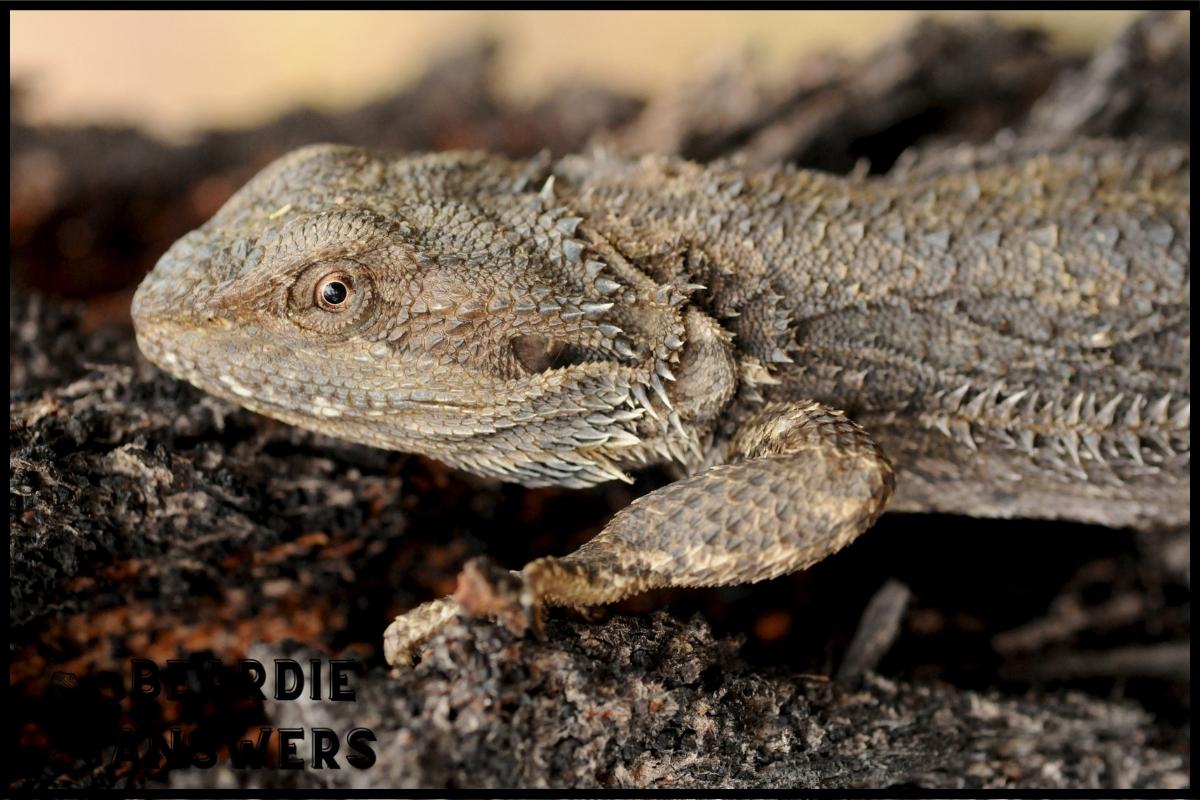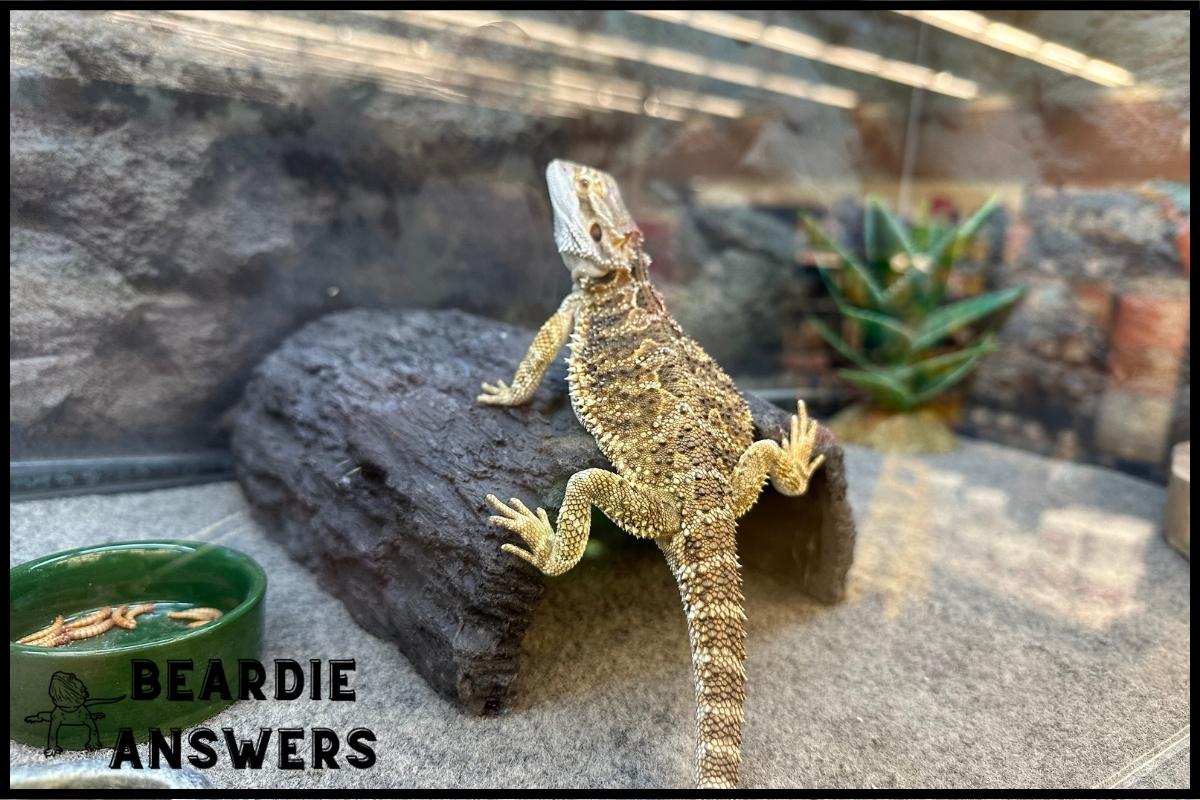How can I tell how old my bearded dragon is: Estimating the age of a bearded dragon can be tricky, as they don’t have obvious age-related characteristics like humans. However, you can estimate their age based on their size, behavior, and physical characteristics. For example, younger dragons tend to be smaller and more active, while older dragons may have more signs of wear and tear, such as scratches or scars. A veterinarian may also be able to help you estimate their age based on their overall health.
What You'll Learn
Estimating Age Based On Physical Characteristics
Estimating the age of a bearded dragon can be quite a tricky task. Of course, there are many different physical characteristics that you should look out for when trying to determine your pet’s age.
Morphology and growth rate are two key indicators in this process. You will want to take note of any changes in head shape, size, or other body parts as these could all point towards an increase or decrease in age.
Bearded dragons typically come with varying sizes depending on their stage of development. For instance, if your bearded dragon is still relatively small compared to others around it, then it may not have reached full maturity yet and could therefore be younger than expected. Similarly, if its size is larger than average for its species, then chances are it has already aged considerably more than one would expect from looking at them alone.
In addition to size alone, observing how the beardie behaves can provide some insight into its age as well. Younger dragons tend to move around more often and act more skittish while older ones usually remain calmer and less active due to their increased experience within their environment.
Therefore paying attention to both morphology and behavior can give you a better understanding of what level of development your pet is likely at right now – whether they’re just starting off on their journey or nearing the end!
Estimating Age Based On Size
When it comes to estimating the age of a bearded dragon, size can be a helpful indicator. Juvenile dragons tend to grow rapidly during their first few months and then slow down considerably after they reach around 8-10 inches in length.
Adult dragons are typically between 12-18 inches long, so if your beardie is larger than this you can assume that they’re an adult or adolescent. Additionally, you may notice changes in your dragon’s feeding habits as they get older, such as becoming less interested in food or being more selective about what they eat.
Another way to estimate a bearded dragon’s age is by observing their shedding cycles. As young dragons grow quickly, they shed often – anywhere from once every two weeks to once per month – while adults will usually only shed once every three months or so. If your beardie is still shedding frequently even though they appear full grown, this could indicate that they’re younger than estimated initially.
Finally, examining physical characteristics like coloration and texture can also help determine how old a bearded dragon is. Young dragons tend to have brighter colors and smoother skin compared to adults which usually display duller hues and rougher scales.
Keep these distinctions in mind when trying to assess the age of your pet reptile! Understanding the basics of behavior can also provide important clues for accurately estimating a dragon’s age.
Estimating Age Based On Behavior
The age of a bearded dragon is often an elusive mystery, like unlocking the secrets of the universe. To decipher this enigma, we must look to its behavior and physical characteristics. Like any living creature, a beardie’s habits can reveal much about how old it is. From habitat changes and diet variations to subtle shifts in demeanor, these telltale signs provide us with insight into their lifecycle.
We begin our journey by taking note of environment alterations as they mature from juvenile to adult. For example, young dragons may be more active during daylight hours but become increasingly nocturnal as they reach adulthood. Additionally, their dietary needs will change over time; hatchlings require higher protein content than adults due to rapid growth rates.
By understanding these nuances, one can gain valuable information regarding age estimation techniques for bearded dragons. To further assist in this endeavor, there are certain visual cues that can also aid in determining age. As most bearded dragons grow older their colors tend to darken or lighten depending on species type and color morphs each individual exhibits. Their facial spines start out short then elongate as they enter adolescence and eventually adulthood. Finally, body size increases exponentially until reaching full maturity at around 2 years of age – though smaller species may take longer while larger ones reach sexual maturity quicker.
Evaluating such behaviors and physical traits helps paint a clearer picture when trying to accurately estimate the age of your pet reptile companion. This knowledge is essential for providing proper care since health issues may arise if not monitored closely throughout their lives…
Health Issues And Bearded Dragon Age
Let’s talk about the signs of age-related health issues and how to identify physical age in bearded dragons.
We can look at physical characteristics, size, and behavior to help us determine their age.
Signs Of Age-Related Health Issues
As your bearded dragon ages, it’s important to be aware of the signs of age-related health issues.
Dietary needs may change and shedding patterns might become more frequent or irregular – both are indications that your pet is growing older.
You should also look out for any changes in their behavior, as well as physical characteristics such as thinning skin and dull scales.
By monitoring these factors closely and adjusting accordingly, you can ensure that your beloved beardie enjoys a long, healthy life.
Identifying Physical Age In Bearded Dragons
It’s not always easy to pinpoint when your bearded dragon is getting older, but there are some physical signs that can help you identify their age.
Lighting requirements may change as they get older; they may require more or less light than before.
Additionally, diet choices should be adjusted accordingly – young dragons need a high protein diet while seniors will benefit from more vegetables and greens.
Overall, the key is to keep an eye out for any changes in behavior or appearance that could indicate aging so that you can make adjustments quickly and ensure that your pet remains healthy and happy.
Social Interaction And Bearded Dragon Age
In terms of physical characteristics, bearded dragon age can also be estimated by looking at their size. As they grow older, their body length and weight will increase; adult bearded dragons typically measure between 18-24 inches in length and weigh between 200-400 grams.
In addition to size, behavior is another useful indicator of a beardie’s age. Juveniles are usually more active than adults, while elderly dragons tend to move around less often and spend more time basking or resting.
Social interaction is one important factor that affects the growth rate of these reptiles. Bearded dragons kept alone may experience stunted growth due to lack of mental stimulation; therefore it is best for them to live with other lizards or humans as companions from an early age.
Breeding habits provide additional clues about the approximate age of a pet lizard – young females may not yet have developed breeding behaviors, such as digging burrows where they lay eggs, whereas mature males may display territoriality when approaching other members of its species.
Knowing how old your pet is essential in understanding its needs and providing proper care accordingly. The above factors should help you form an educated guess on how many years your scaly friend has been alive – however if you really want to know the exact age then consulting with a vet would be the best option!
Factors That Influence Bearded Dragon Age
Bearded dragons are fascinating reptiles, and many people want to know their age. Unfortunately, it isn’t always easy to determine the exact age of a bearded dragon. However, there are certain factors that can help you make an educated guess about how old your pet is.
Factors That Influence Bearded Dragon Age
Physical Characteristics:
- Size – As they grow older, bearded dragons get larger in size. Smaller dragons tend to be younger than those who have reached full-size adulthood.
- Coloration – Younger dragons often have brighter colors compared to adults whose colors may become dull over time.
- Scales – Over time scales on a beardie’s body will become more prominent and hardened as they age.
Behavior:
- Activity Level – Young bearded dragons typically show more energy while adults appear calmer overall.
- Socialization – Adult Dragons usually prefer solitary activity whereas young ones like to interact with other similar species or humans when handled properly.
Dietary Needs & Temperature Needs:
A well looked after adult dragon should eat less frequently than a young one since its metabolism slows down as it ages. Additionally, adults need lower temperatures in order for them to regulate their internal temperature better than juveniles do due to higher metabolic rates in younger animals.
Knowing these key factors can help you gain insight into the age of your beloved pet so you can give them the best care possible!
Conclusion
Estimating the age of a bearded dragon can be tricky, but it is possible with some research and observation. Knowing their age can help you better understand their general health needs as well.
It’s like trying to piece together a puzzle; all the physical characteristics, size, behavior and social interaction come together to give an overall picture of their age.
With patience and practice, you’ll soon become an expert at estimating your pet’s age!

Hi! My name is Bryan, I am the “one behind the words” here are BeardieAnswers.com. I believe that providing quality care and nutrition is the best way to ensure the health of your pet. Every beardie is special and deserves the best care and attention. If you have questions about your bearded dragon, please don’t hesitate to ask! View My Full Author Page




